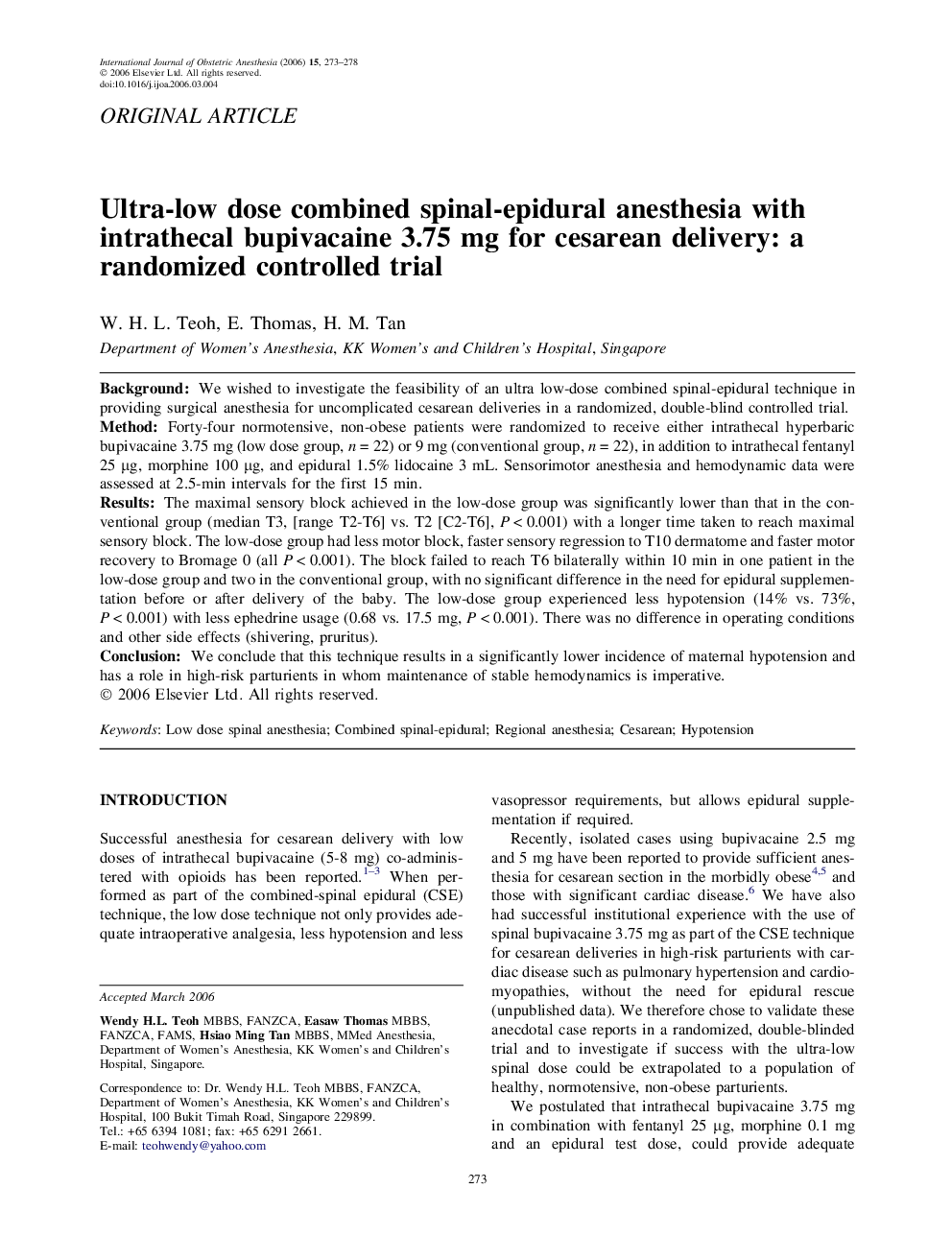| Article ID | Journal | Published Year | Pages | File Type |
|---|---|---|---|---|
| 2758391 | International Journal of Obstetric Anesthesia | 2006 | 6 Pages |
BackgroundWe wished to investigate the feasibility of an ultra low-dose combined spinal-epidural technique in providing surgical anesthesia for uncomplicated cesarean deliveries in a randomized, double-blind controlled trial.MethodForty-four normotensive, non-obese patients were randomized to receive either intrathecal hyperbaric bupivacaine 3.75 mg (low dose group, n = 22) or 9 mg (conventional group, n = 22), in addition to intrathecal fentanyl 25 μg, morphine 100 μg, and epidural 1.5% lidocaine 3 mL. Sensorimotor anesthesia and hemodynamic data were assessed at 2.5-min intervals for the first 15 min.ResultsThe maximal sensory block achieved in the low-dose group was significantly lower than that in the conventional group (median T3, [range T2-T6] vs. T2 [C2-T6], P < 0.001) with a longer time taken to reach maximal sensory block. The low-dose group had less motor block, faster sensory regression to T10 dermatome and faster motor recovery to Bromage 0 (all P < 0.001). The block failed to reach T6 bilaterally within 10 min in one patient in the low-dose group and two in the conventional group, with no significant difference in the need for epidural supplementation before or after delivery of the baby. The low-dose group experienced less hypotension (14% vs. 73%, P < 0.001) with less ephedrine usage (0.68 vs. 17.5 mg, P < 0.001). There was no difference in operating conditions and other side effects (shivering, pruritus).ConclusionWe conclude that this technique results in a significantly lower incidence of maternal hypotension and has a role in high-risk parturients in whom maintenance of stable hemodynamics is imperative.
